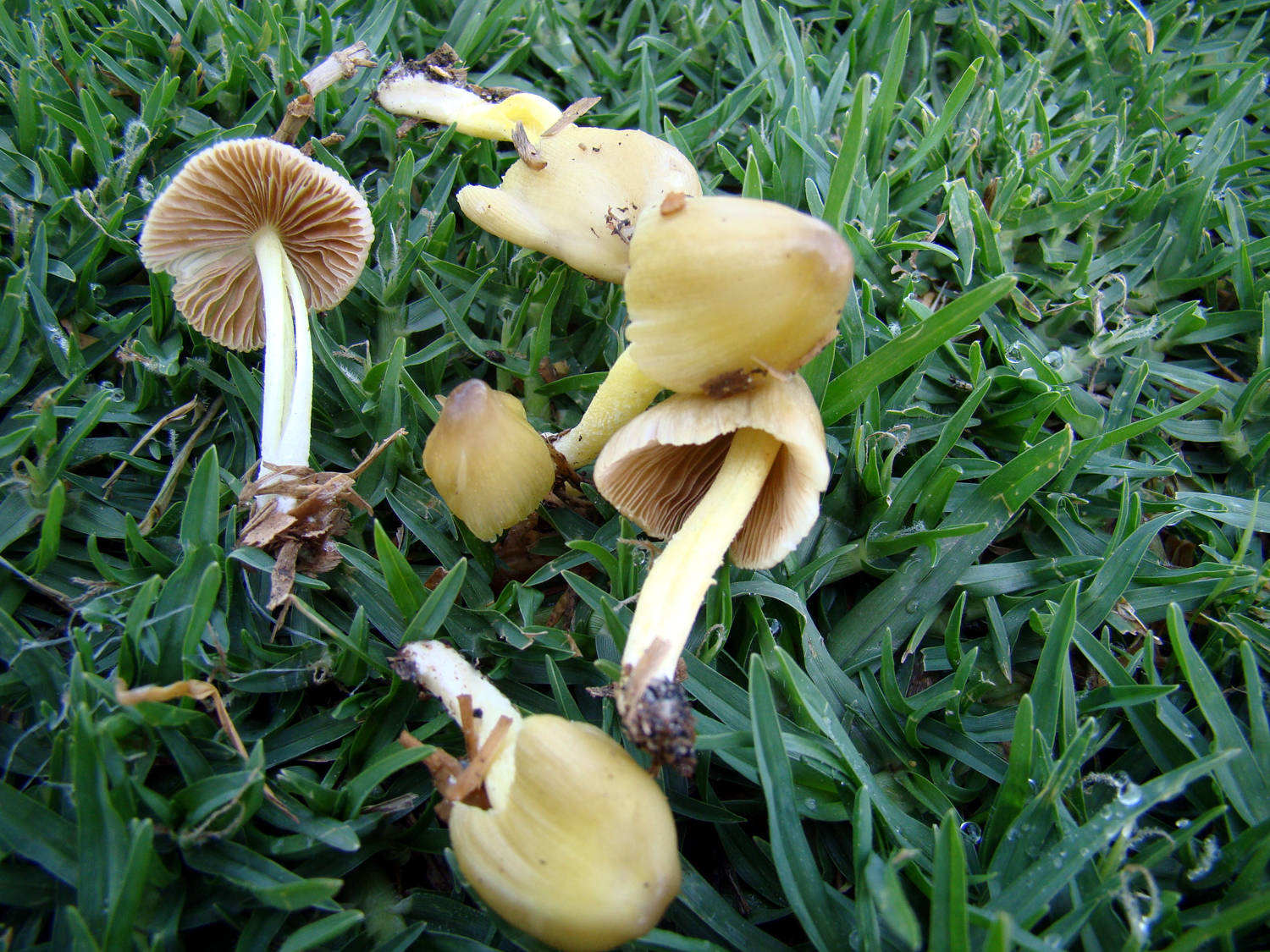
Local name: No local name known
Edibility: Too tiny for culinary purpose.
Habitat: Solitary and on the lawns among grasses.
Description: Cap: 1-2 cm, conic to convex shape and sometimes becomes flat when matured fully, yellowish with light brown centre when young and slowly fades away to become whitish at maturity. The surface of the cap is translucent-striated and tears apart when opened fully, surface viscid when moist, the margin is decurved in young specimens and plane when it matures. Hymenophore: Adnexed gills, close when young and becoming sub-distant when fully matured yellowish when very young, turns brownish as the spores are released and whitish when all the spores are released into the air, margin of the gills is smooth, and no lamellulae present. Stem: 2 -5 cm long, 1-2cm wide, hollow, smooth, yellowish towards the apex and whitish at the base, sub-clavate shape, positioned to the centre, context cream coloured, and fibrillose texture. Flesh: White and stringy. Spore Print: Brown
Comments: This fragile mushroom varies greatly in size, shape, and habitat but can generally be recognized by its viscid, yellow, striate cap, plus its rusty coloured gills and soft, fragile texture. Other species include B. coprophilus, with a greyish- pinkish cinnamon cap in age, usually found on dung and B. lacteus, with a small whitish cap, found in dung, grass, straw, etc but not nearly as common as B.vitellinus.


